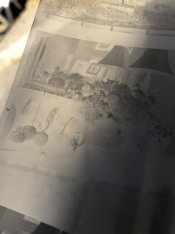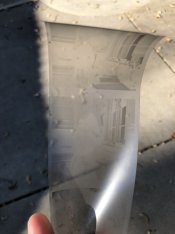Did some testing of some new cameras yesterday and had very disappointing results when I developed and scanned. Shot my first roll of film through a Mamiya c33 (Arista Edu 400) and shot cut Kentmere 400 through several Minolta 16s. The 120 negatives look really thin - clear looking in many areas. The 16mm negatives visually look less “off” to me but they are very small so it’s harder for me to judge. The resulting scans are quite dark from both (EPSON V500). I metered using a new to me Gossen Scout II which I believed to be fairly accurate based on comparisons with my K1000 and at times with the cds meter is some of the Minolta 16 (qt and MG-S). I think the Minolta 16 meters are a bit optimistic (letting me shoot indoors when I think I shouldn’t have been able to) but it’s hard to discern a pattern - metered by the camera or metered by the Gossen LM, pretty much all my scans were very dark. I’m not sure if this is a metering problems, inaccurate shutter speed problems, a developing problem or probably least likely, a scanning problem.
I usually semi stand developed with Rodinal 1:100 for an hour. I heard someone say they got great results with 1:200 for 2 hours so that’s what I did. 1 agitated after 70 minutes or so. The house was pretty cool (60 degrees at best) and I ran water from the tub but didn’t really check the temp. Not sure how much difference that could make.
I hope it’s not an issue with my Mamiya shutter speeds. I would tend to think a “faster than it should be) shutter speed is much less likely than a slower shutter speed and the fact that the Minolta suffered from under exposure too (or underdevelopment) makes me think it’s either a metering or development problem.
I downloaded the Lux Lightmeter app expecting to find that my Gossen was actually way off but that doesn’t appear to be the case. In testing today, they are close, one way or the other by a stop or less).
Thanks for any advice on this matter.
I usually semi stand developed with Rodinal 1:100 for an hour. I heard someone say they got great results with 1:200 for 2 hours so that’s what I did. 1 agitated after 70 minutes or so. The house was pretty cool (60 degrees at best) and I ran water from the tub but didn’t really check the temp. Not sure how much difference that could make.
I hope it’s not an issue with my Mamiya shutter speeds. I would tend to think a “faster than it should be) shutter speed is much less likely than a slower shutter speed and the fact that the Minolta suffered from under exposure too (or underdevelopment) makes me think it’s either a metering or development problem.
I downloaded the Lux Lightmeter app expecting to find that my Gossen was actually way off but that doesn’t appear to be the case. In testing today, they are close, one way or the other by a stop or less).
Thanks for any advice on this matter.




